Explore these 25 beautiful kitchens from the 1930s and 1940s, which beautifully blend function and style, with every detail designed to make daily life easier while maintaining a welcoming atmosphere. From brightly colored linoleum floors to bold enamelware and charming Hoosier cabinets, these kitchens were filled with personality. Whether it was the sleek chrome accents or the durable farmhouse sinks, each element played a vital role in creating a kitchen that was both practical and stylish. Reviving these design elements today allows you to capture the nostalgia and charm of the past while enjoying the benefits of modern living.
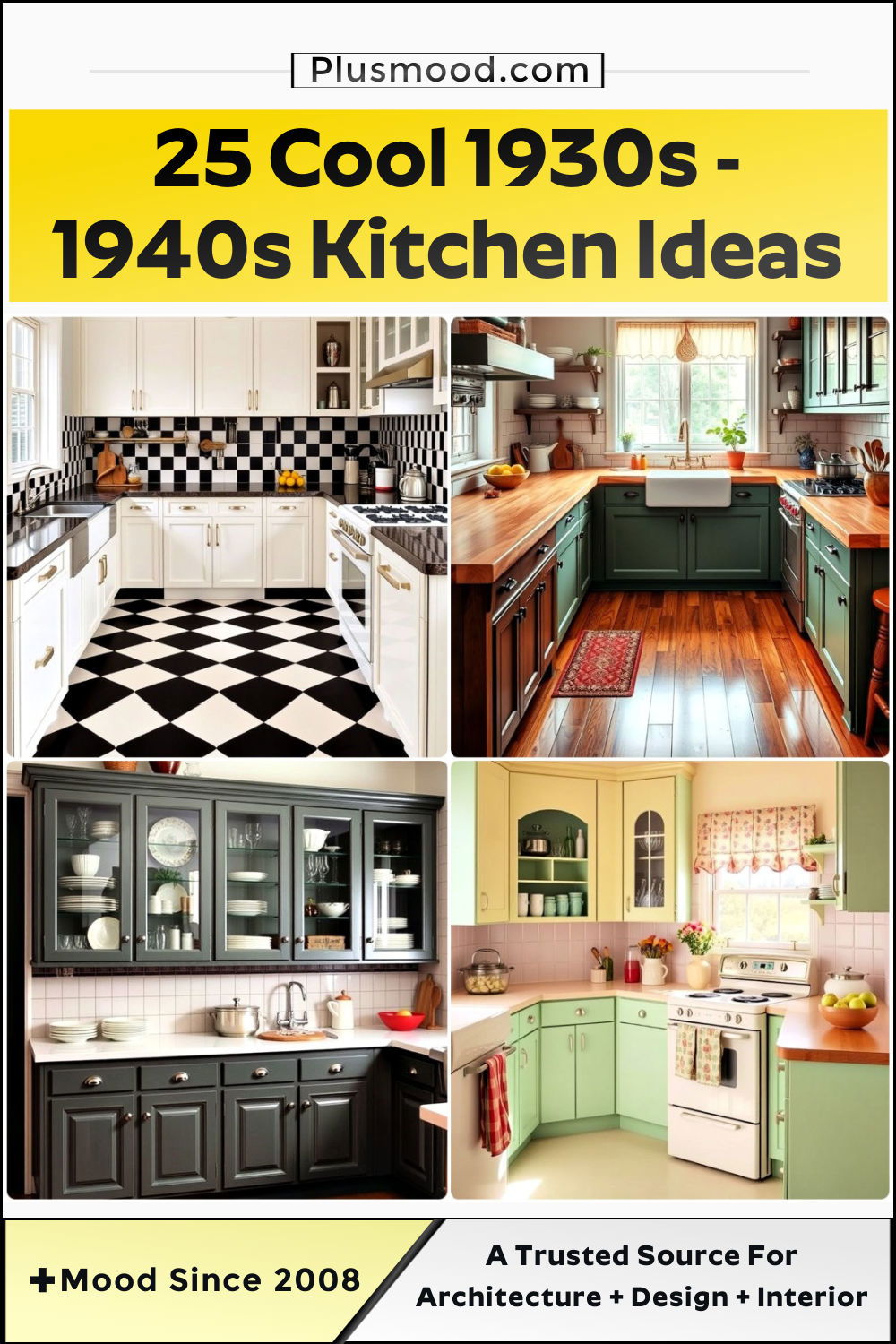
1. Vintage Linoleum Floors for a Pop of Color

Linoleum floors were a staple in 1930s and 1940s kitchens, offering vibrant colors and patterns that brought life to the space. Often featuring checkered kitchen floor designs or floral patterns, these floors were durable, easy to clean, and cost-effective. Adding linoleum flooring today can recreate that retro feel while maintaining practicality, making it a nostalgic and functional choice for vintage-inspired kitchens.
2. Bold Enamelware for a Retro Touch
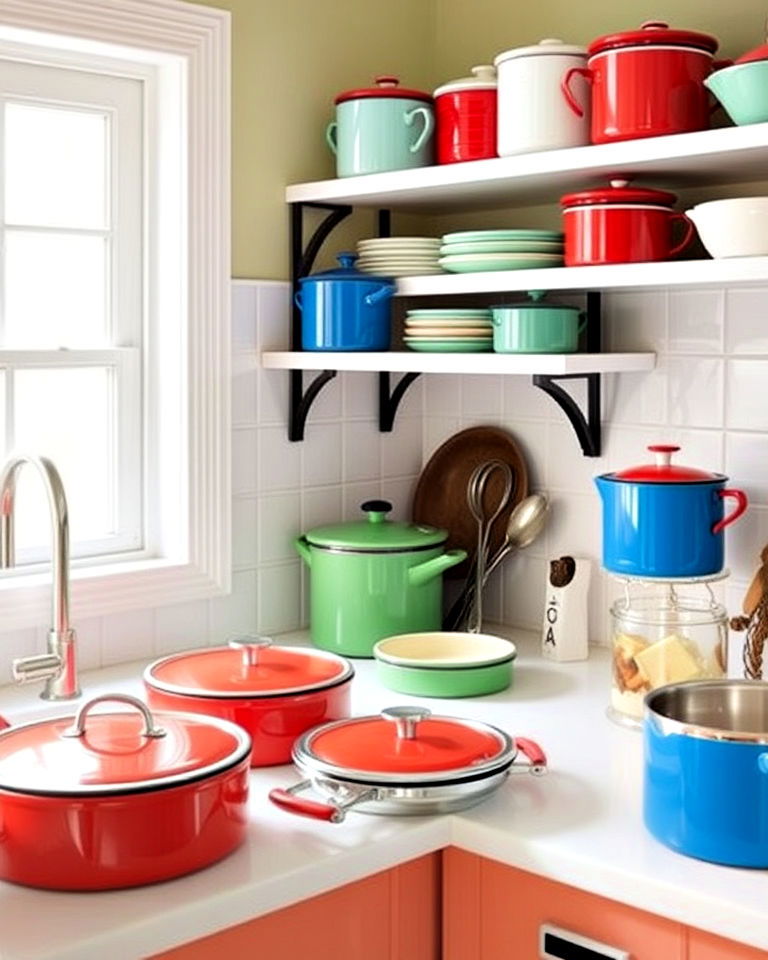
Enamelware, particularly in bright colors like red, blue, or green, was popular in kitchens during this era. From pots and pans to coffee percolators, these durable and heat-resistant items added charm and function. Incorporating enamelware into your kitchen today—whether through vintage finds or reproductions—can infuse your space with the spirit of the 1930s and 1940s.
3. Freestanding Hoosier Cabinets

Step back in time with charming 1930s kitchen designs full of character, showcasing the unique features of a 1930s kitchen. Hoosier cabinets were common in 1930s and 1940s kitchens, offering compact storage and workspace. These freestanding cabinets featured built-in flour sifters, spice racks, and ample storage for baking essentials. Bringing a Hoosier cabinet into your kitchen can add both vintage style and practical storage, making it a charming and functional focal point.
4. Farmhouse Sinks for Vintage Utility
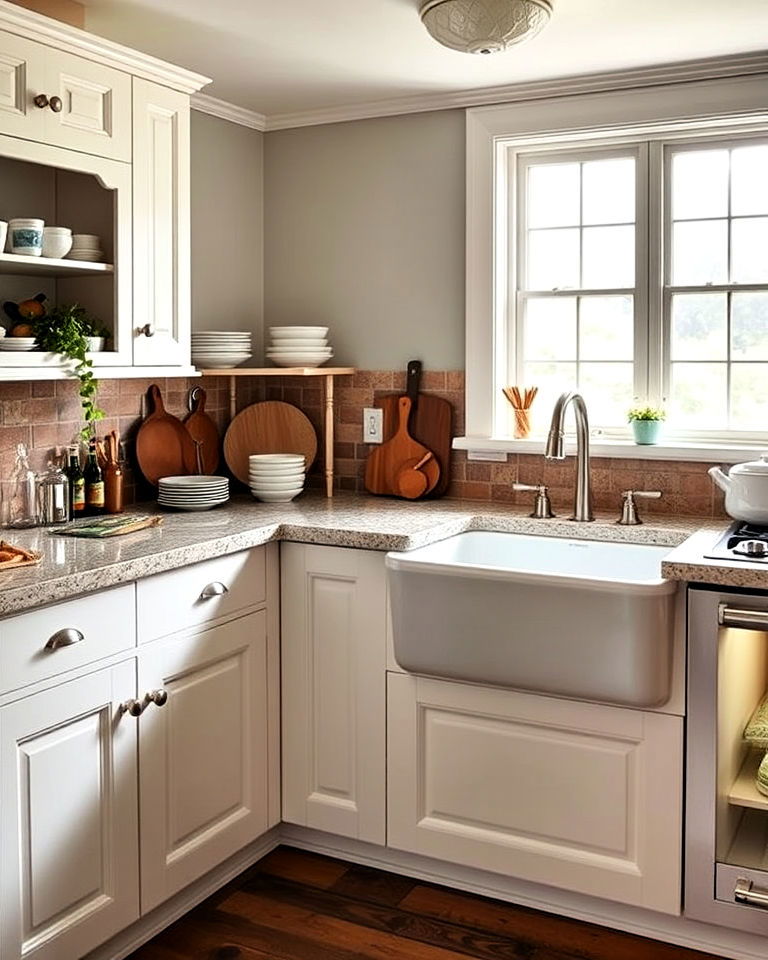
Farmhouse sinks, often made of porcelain or cast iron, were a hallmark of 1930s and 1940s kitchens. These deep, wide sinks allowed for easy washing of large pots and dishes. Incorporating farmhouse sinks into a modern kitchen pays homage to this classic feature while offering plenty of functionality, making it both a stylish and practical addition.
5. Iceboxes and Early Refrigerators
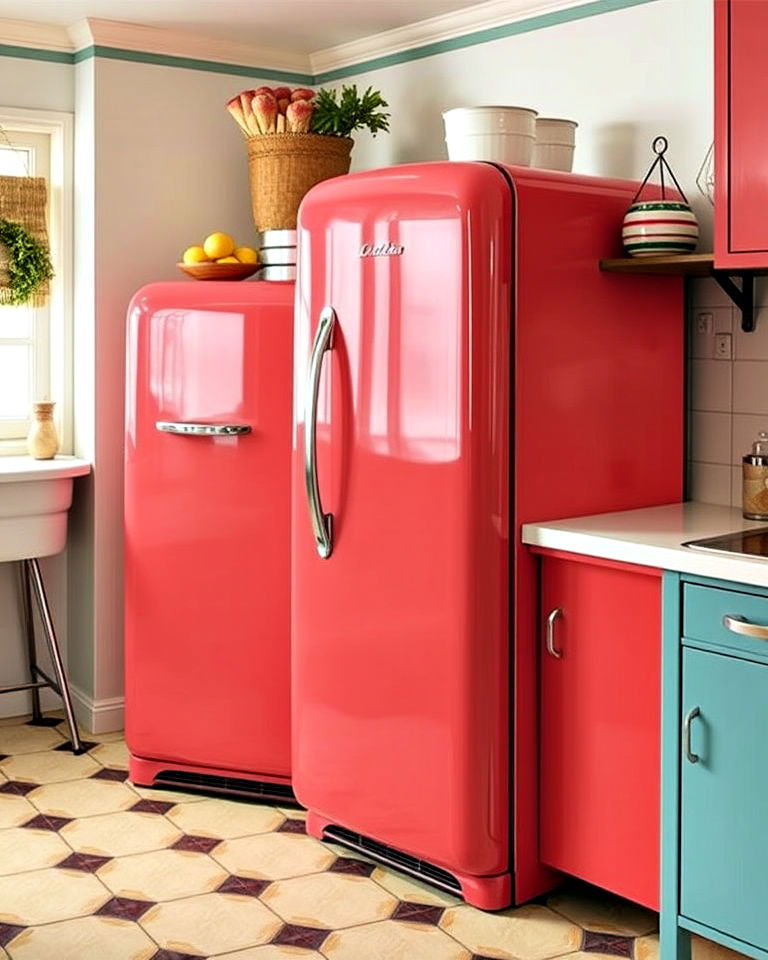
Before modern refrigerators became widespread, iceboxes were the norm. Made from wood and lined with metal, these cabinets held blocks of ice to keep food cool. In the 1940s, early refrigerators with rounded corners and chrome hardware became popular. Incorporating a vintage-style refrigerator today, complete with retro features and bright colors, can bring this nostalgic charm into your kitchen.
6. Checkerboard Tile Backsplashes

Checkerboard patterns were common in kitchens of the 1930s and 1940s, particularly in black and white or bold color combinations. These tiles were often used on floors and backsplashes, creating a playful yet timeless look. Reintroducing checkerboard tiles into your kitchen design adds instant retro appeal and keeps the space visually engaging.
7. Open Shelving for Displaying Essentials

Explore the elegance and practicality of a 1940s kitchen for your home. Open shelving was a practical and stylish solution in mid-century kitchens, allowing easy access to frequently used items like dishes, pots, and pantry staples. Incorporating open shelving into your kitchen today offers an opportunity to showcase vintage dishware, adding character and functionality while maintaining a 1930s or 1940s vibe.
8. Brightly Colored Cabinets
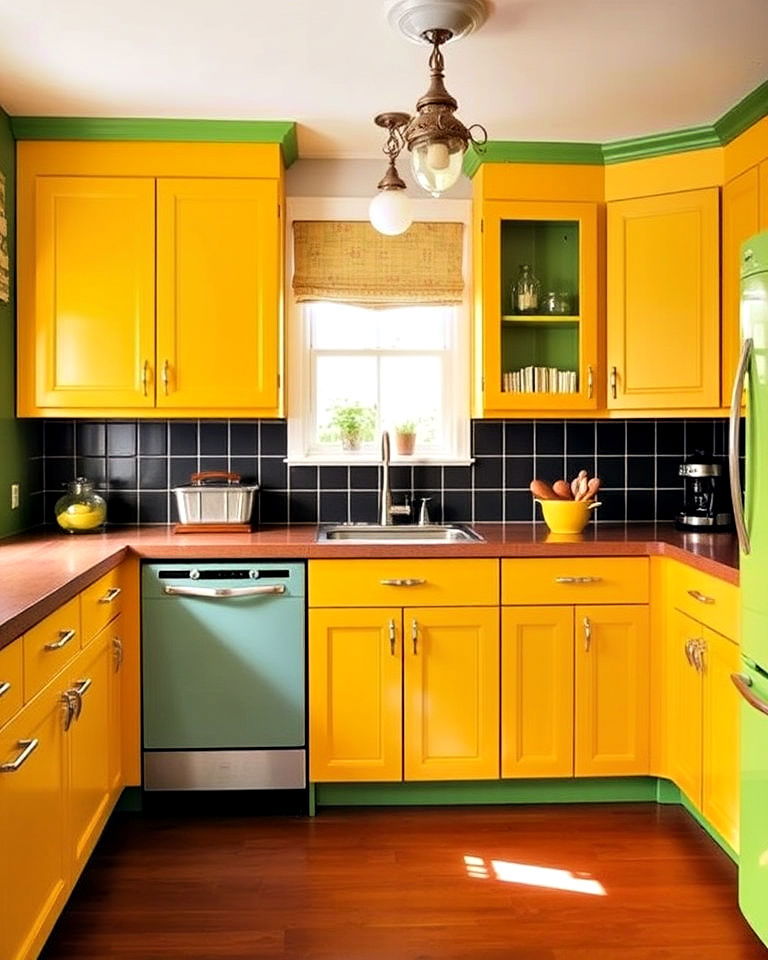
In the 1930s and 1940s, kitchens were often bright and cheerful spaces, with cabinets painted in bold hues like yellow, green, or blue. Painting your kitchen cabinets in a retro color instantly gives the space a period-appropriate feel. Pairing pastel kitchen cabinets in these colors with chrome hardware or vintage-style pulls completes the nostalgic look.
9. Retro Appliances for a Vintage Vibe
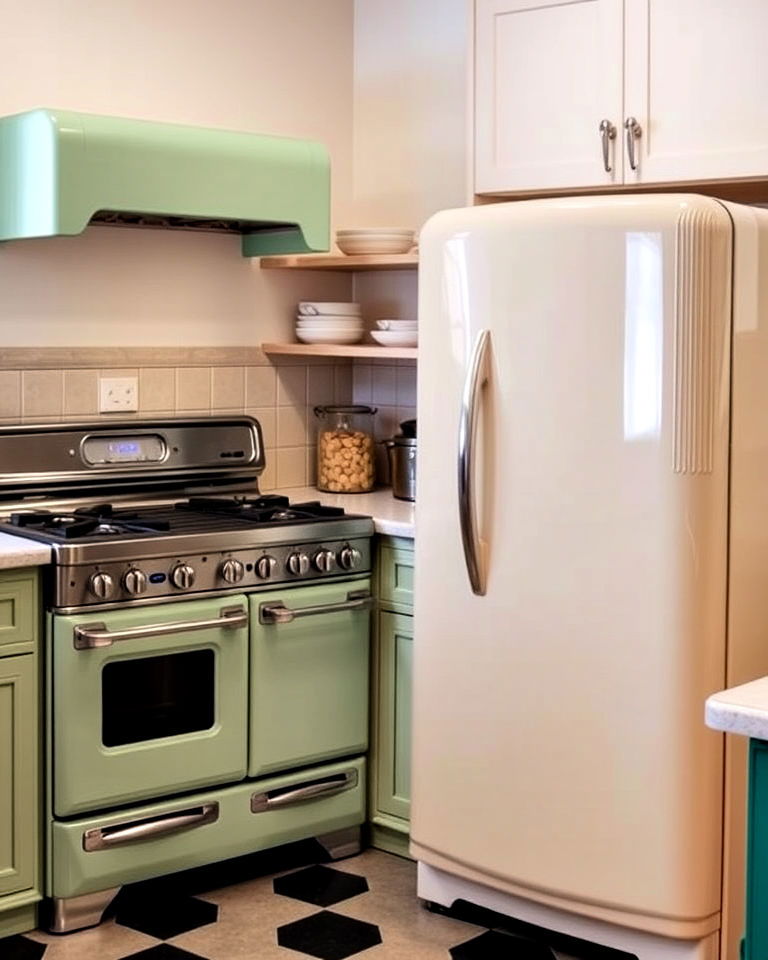
Vintage appliances, such as stoves and refrigerators, were often finished in pastel hues or chrome. Modern replicas of these appliances capture the look and feel of the 1930s and 1940s while offering updated technology. Adding retro appliances to your kitchen brings a touch of the past without sacrificing modern convenience.
10. Vintage-Style Lighting Fixtures
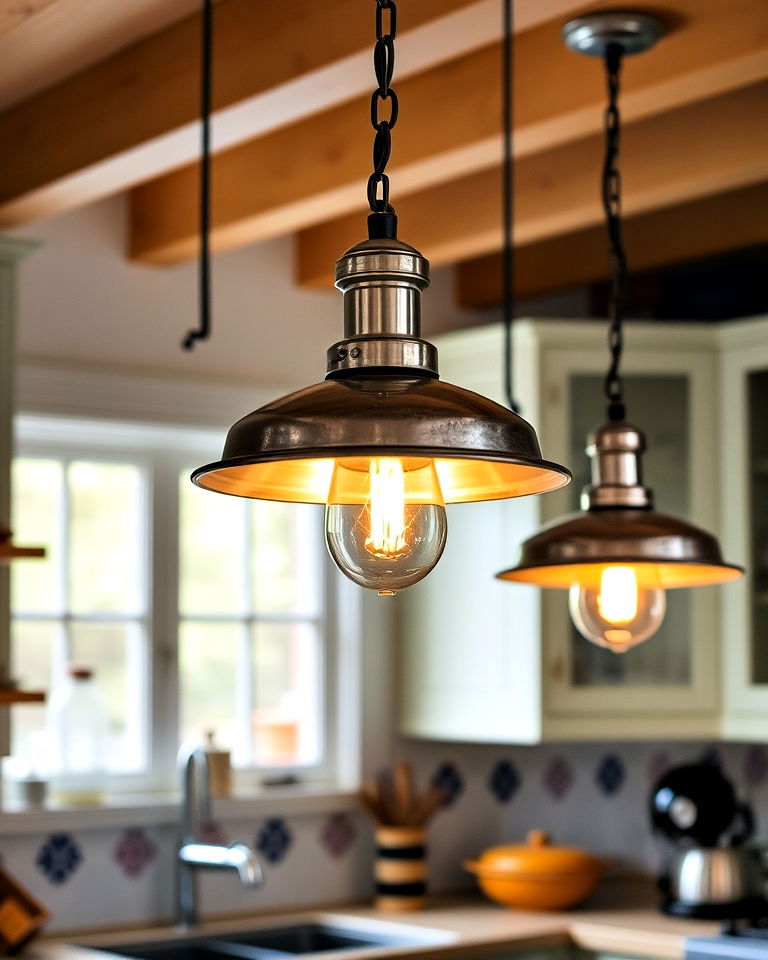
Pendant lights with metal or glass shades were popular in kitchens of this era, casting soft, ambient light over workspaces. Globe-shaped fixtures and schoolhouse lights were also common. Installing vintage lighting in your kitchen can evoke the classic, utilitarian charm of 1930s and 1940s kitchens, while brightening the space.
11. Breakfast Nooks for Cozy Dining
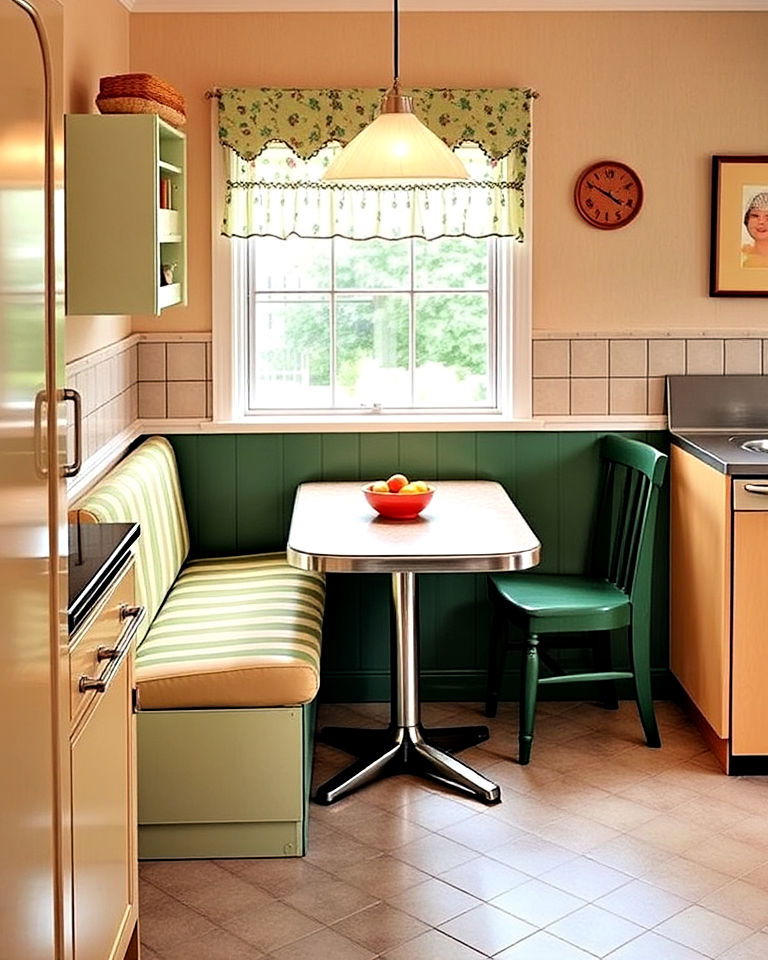
The 1930s and 1940s saw the rise of the breakfast nook, a small dining area often built into a corner of the kitchen. Featuring a simple table and bench seating, these nooks were cozy spots for casual meals. Recreating a breakfast nook in your kitchen offers a quaint and intimate dining area with a distinctly vintage charm, perfect for cozy dining experiences.
12. Pastel Paints for a Soft Palette
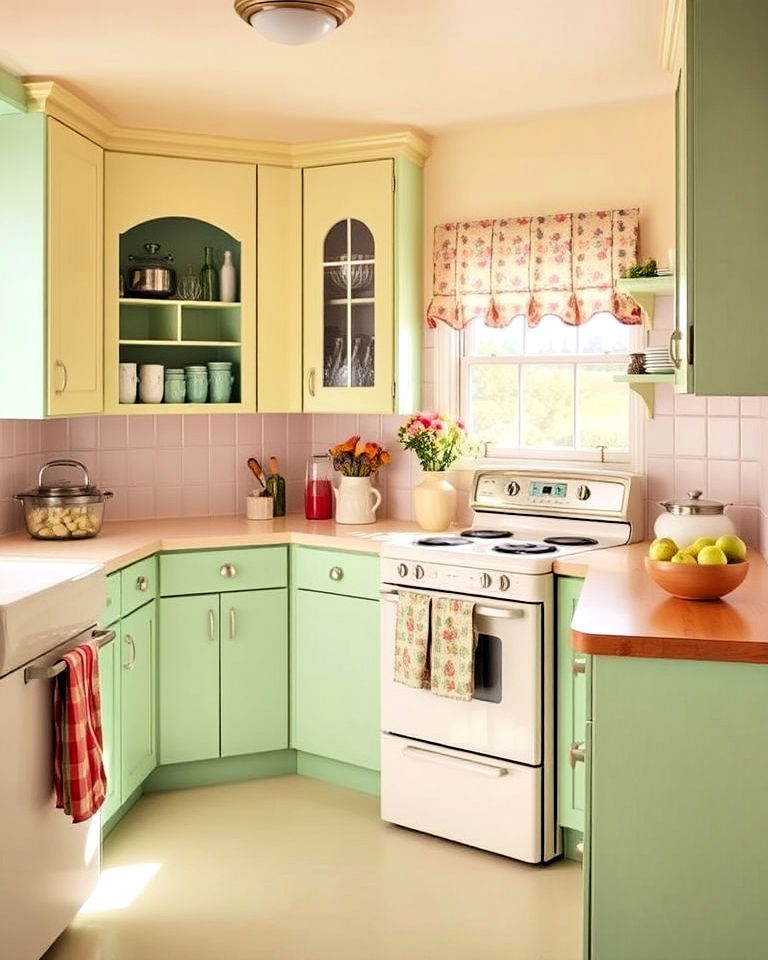
Preserve the charm of an original 1940s kitchen with timeless details. Pastel colors, especially shades of mint green, soft yellow, and pale pink, were widely used in 1940s kitchens. These soothing colors created a light, airy feel often seen in pastel kitchens. Painting your kitchen walls or cabinets in pastel tones instantly recalls the cheerful, welcoming atmosphere of mid-century kitchens.
13. Butcher Block Counters for Functionality
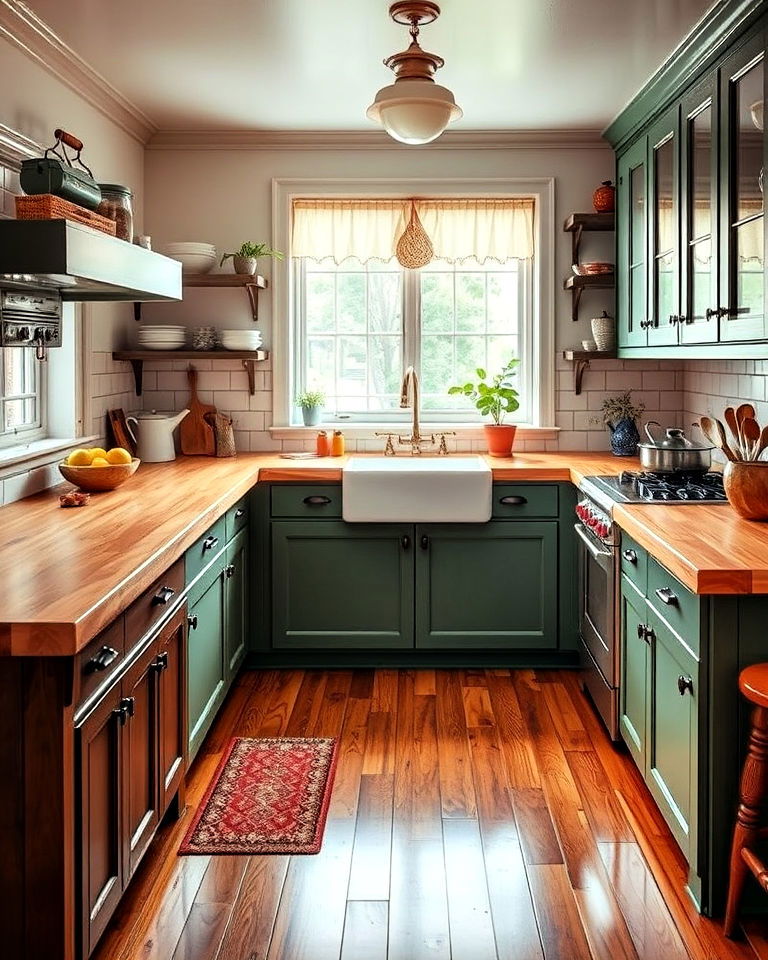
Butcher block countertops were common in 1930s and 1940s kitchens due to their practicality and durability. These butcher block countertops were ideal for food preparation and added a warm, natural element to the kitchen. Installing butcher block countertops in your kitchen can add vintage flair while providing a functional and timeless workspace.
14. Metal Canister Sets for Easy Storage
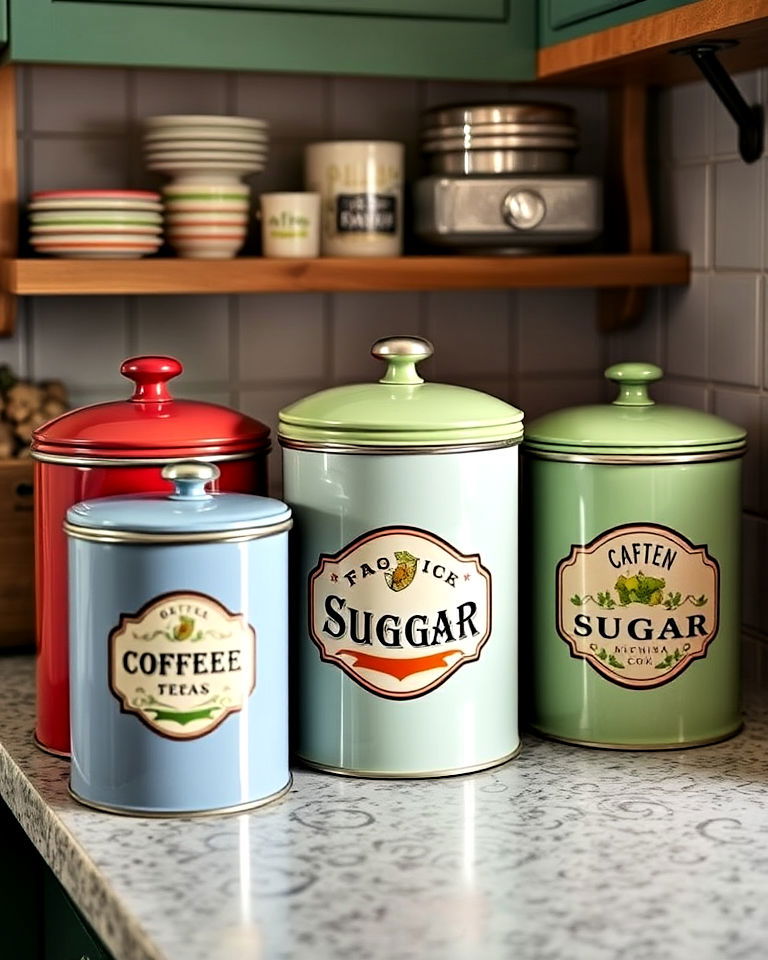
Metal canister sets in bold colors or with decorative labels were a common sight in 1940s kitchens. Used to store flour, sugar, coffee, and tea, these sets were both practical and stylish. Reintroducing vintage-style canisters into your kitchen offers an easy way to organize your space while adding retro charm to your countertops.
15. Vintage Stoves for Classic Cooking
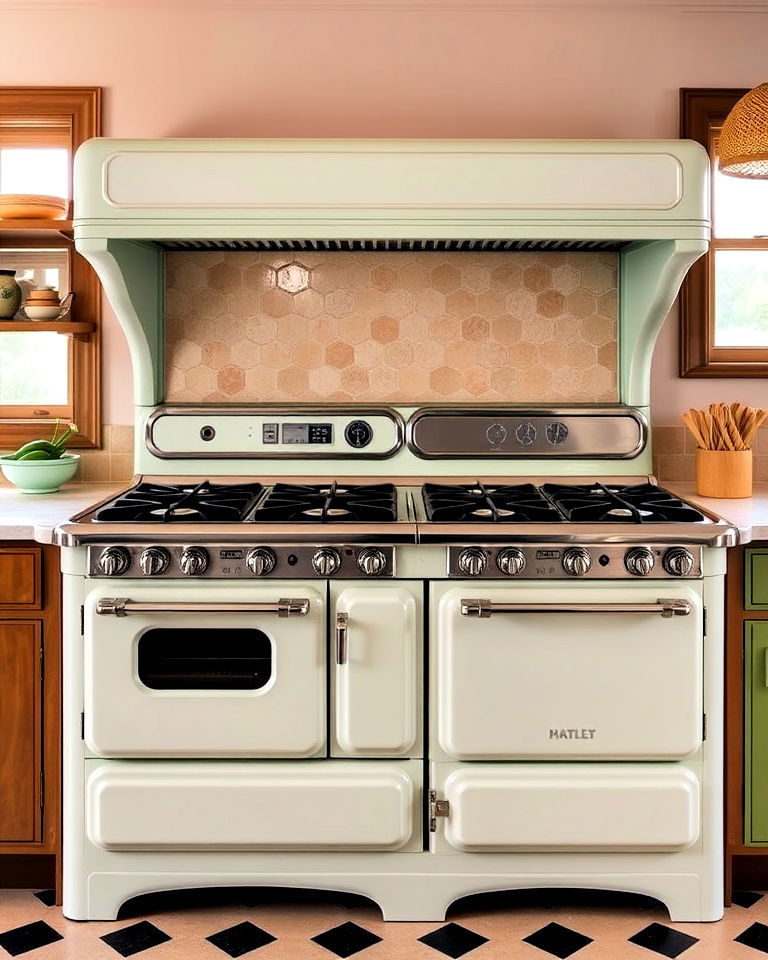
Large, cast-iron stoves with enamel finishes were a key feature of 1930s and 1940s kitchens. These stoves often came in pastel colors with chrome accents, blending form and function beautifully. Incorporating a vintage or vintage-style stove in your kitchen instantly elevates its retro aesthetic and becomes a focal point for the space.
16. Art Deco Hardware for Glamorous Details
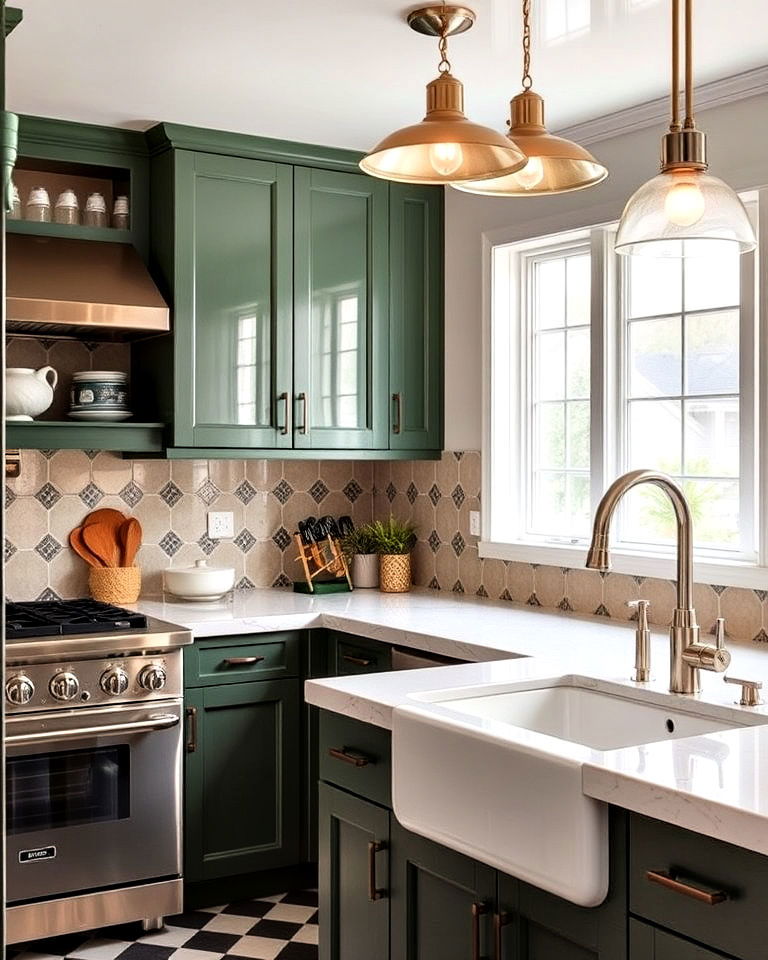
During the 1930s, the Art Deco movement influenced many aspects of home design, including kitchens. Chrome, brass, and geometric shapes were often used in hardware like cabinet pulls, light fixtures, and faucets. Adding Art Deco-inspired hardware to your kitchen can enhance its vintage look with a touch of glamour.
17. Glass-Front Cabinets for Display
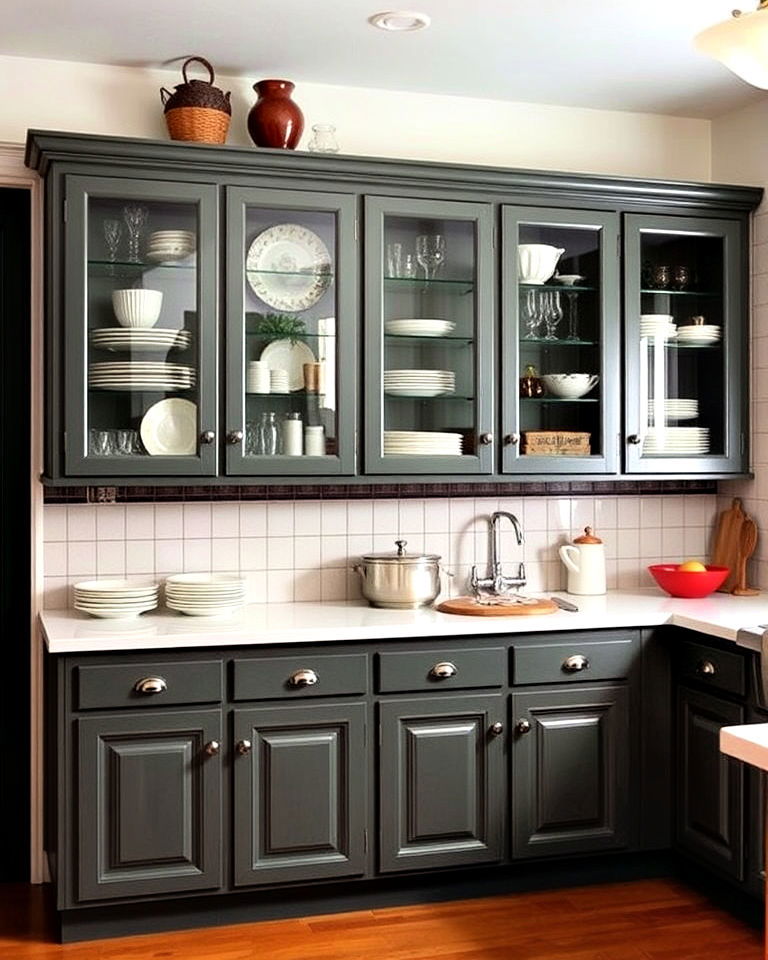
Celebrate history with the authentic style of an original 1930s kitchen. Glass-front cabinets were popular in the 1930s and 1940s, offering both storage and display space for dishware and glassware. These cabinets allowed homeowners to show off their best pieces while keeping them easily accessible. Installing glass-front cabinets in your kitchen adds a classic, vintage feel and opens up the space visually.
18. Chrome and Bakelite Accents
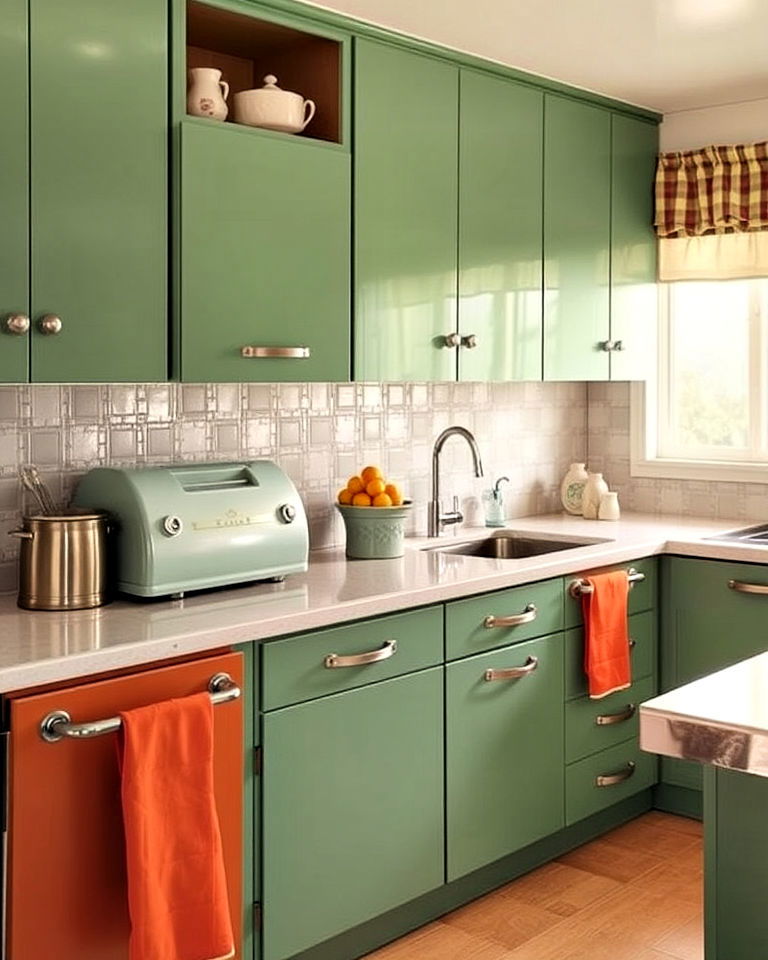
Bakelite, an early form of plastic, and chrome were often used in kitchen accessories and hardware in the 1940s. Items like cabinet pulls, salt and pepper shakers, and even small appliances often featured these materials. Incorporating Bakelite or chrome accents into your kitchen adds a period-appropriate, industrial touch that enhances the vintage feel.
19. Black and White Tile for Classic Contrast
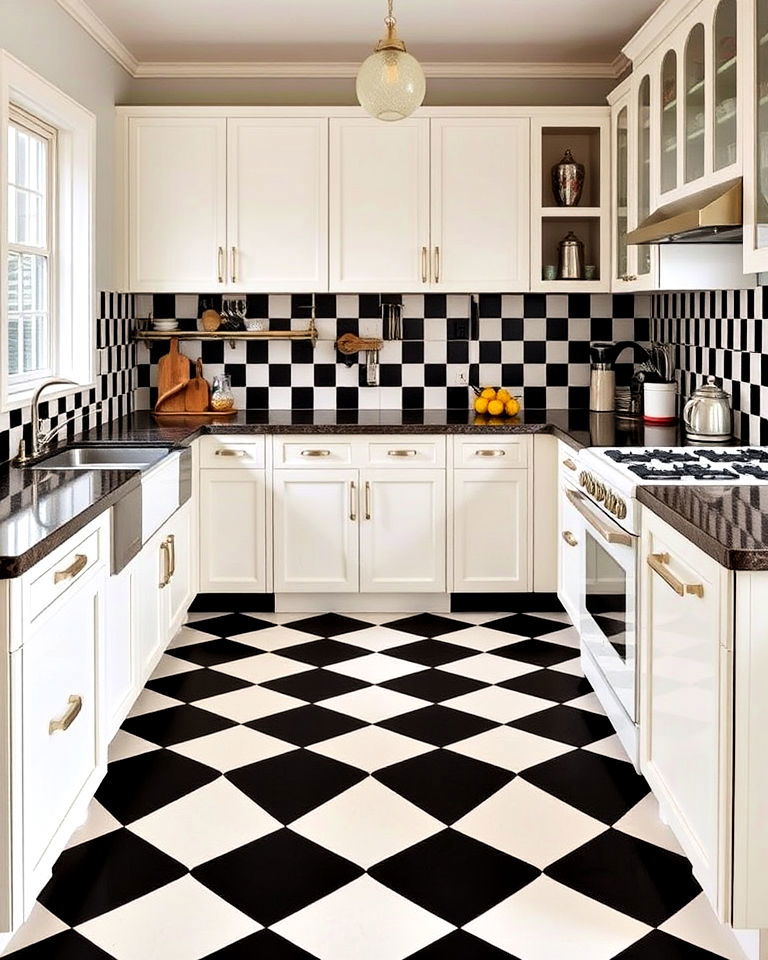
Black and white tiles, often arranged in geometric patterns, were common in 1930s and 1940s kitchens. This classic combination creates a high-contrast look that remains timeless and elegant. Using black and white tiles in your kitchen design can instantly evoke the style of this era, while adding a sleek, retro finish.
20. Retro Linens and Tablecloths
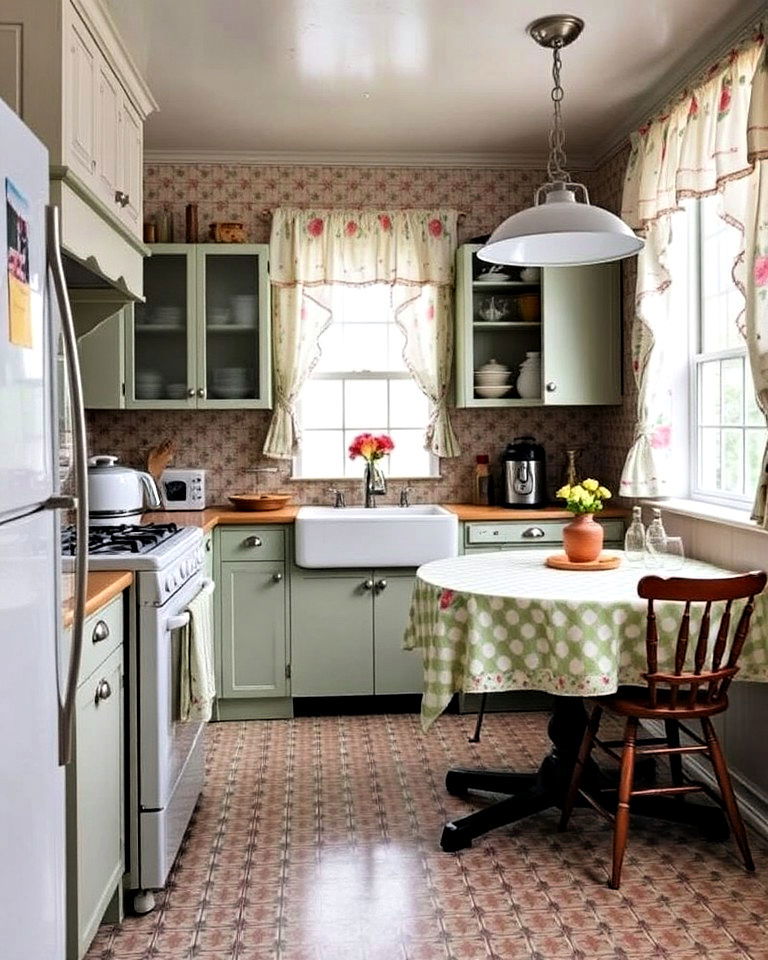
Floral or gingham-patterned linens and tablecloths were a key decorative element in mid-century kitchens. These soft textiles added a cozy, homey feel to the space. Introducing vintage-style linens, such as patterned curtains or tablecloths, can soften the overall look of your kitchen and give it a warm, nostalgic atmosphere.
21. Stainless Steel Counters for Durability
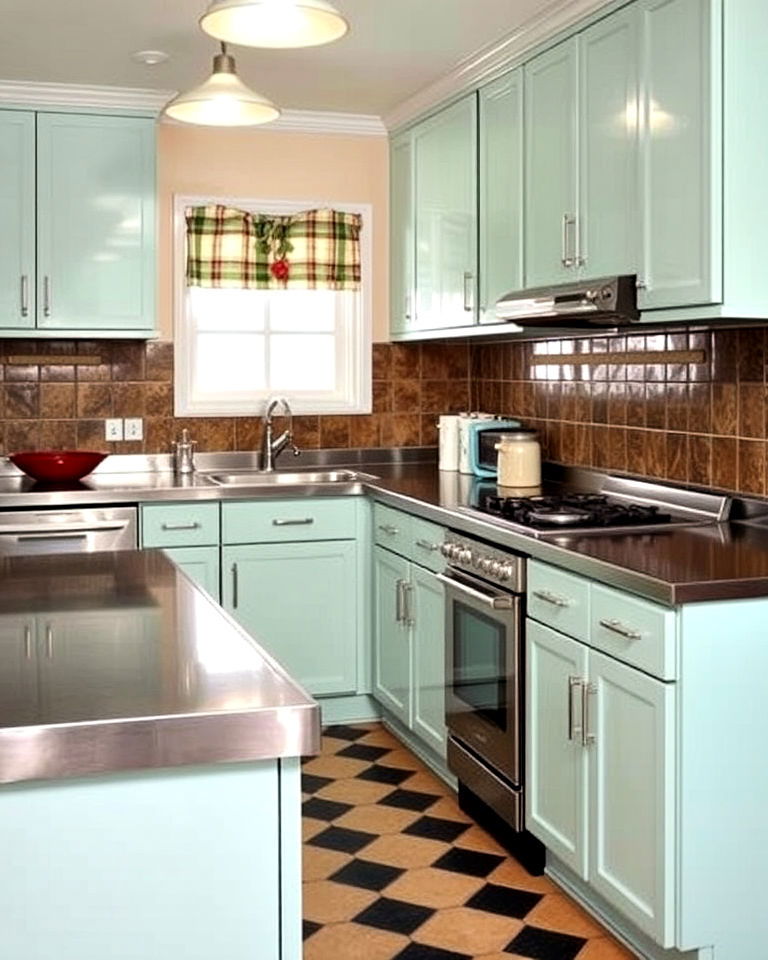
In the 1940s, stainless steel countertops became popular due to their durability and resistance to heat and stains. These countertops were often paired with chrome details for a sleek, modern look. Installing stainless steel counters today can bring a touch of vintage utility while offering a practical and long-lasting kitchen surface.
22. Built-in Breakfast Bars
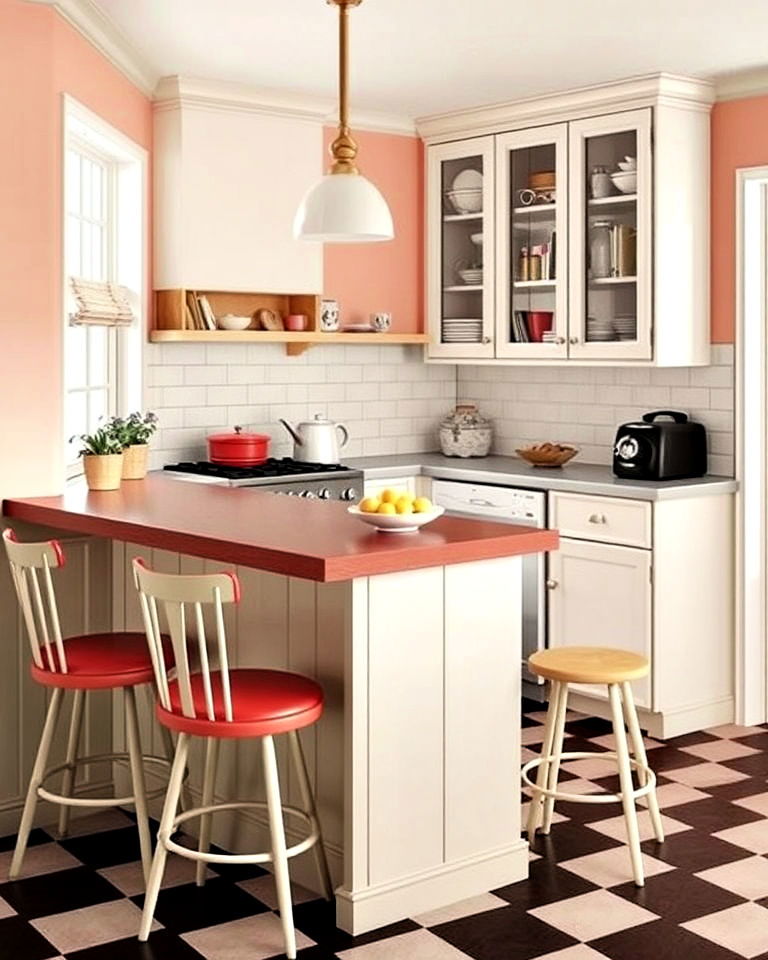
In the 1940s, built-in breakfast bars became popular for small kitchens, offering an additional eating area without taking up much space. These bars were often placed near windows or integrated into countertops. Reintroducing a built-in breakfast bar into your kitchen adds both functionality and vintage charm, perfect for casual meals or extra workspace.
23. Tile Countertops for a Classic Surface
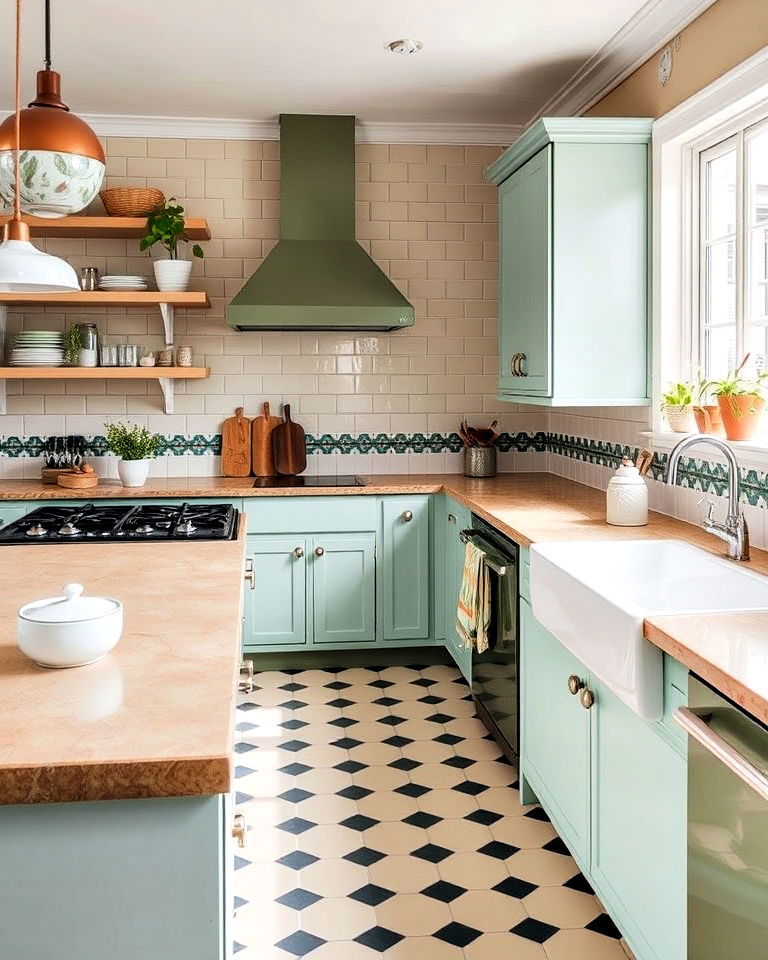
Add retro charm with 1940's vintage kitchen cabinets to complete your look, seamlessly blending functionality with style.
Tile countertops, often in pastel shades or bold patterns, were a popular choice in the 1930s and 1940s. These tiles were easy to clean and durable, offering a practical yet stylish surface. Recreating this look in your kitchen with vintage-inspired tiles adds a nostalgic touch while providing a durable and easy-to-maintain surface.
24. Metal Kitchen Cabinets for a Modern Touch
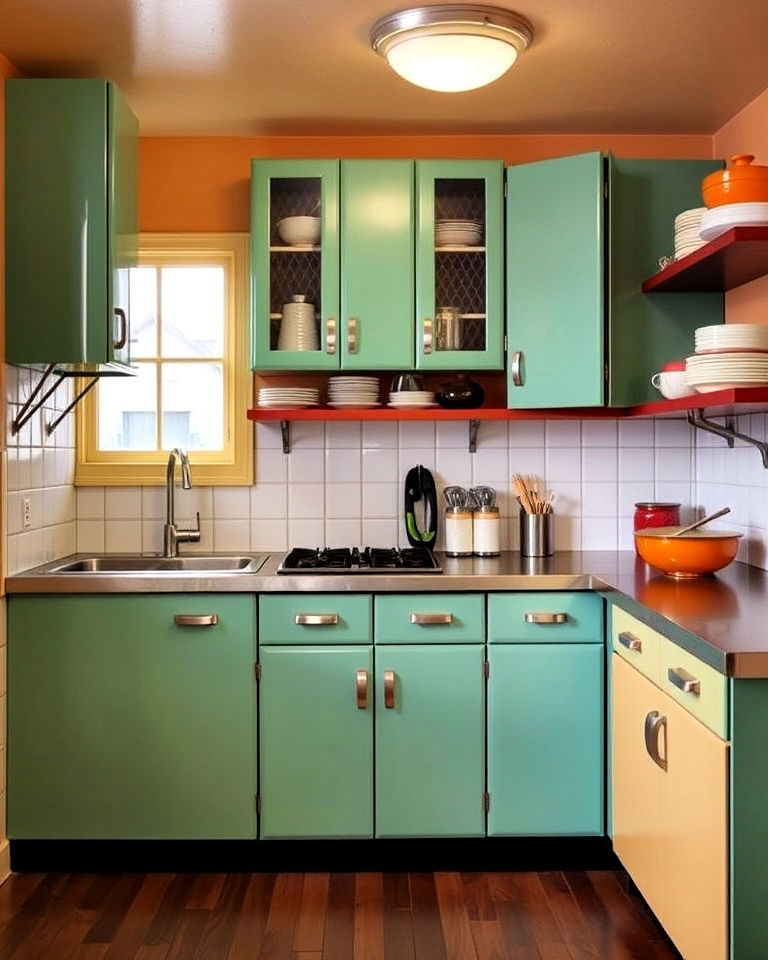
Metal kitchen cabinets, often painted in bright colors, gained popularity in the 1940s as a modern alternative to wood. These cabinets were easy to clean and offered a sleek, industrial look. Incorporating metal cabinetry into your kitchen can give it a retro, mid-century modern feel, blending vintage design with a touch of industrial style.
25. Vintage Advertisement Decor

Kitchens in the 1930s and 1940s often featured decorative elements like framed advertisements or tin signs for popular brands. These pieces added a whimsical touch and reflected the consumer culture of the time. Incorporating vintage advertisements or retro wall art into your kitchen can enhance its nostalgic appeal while adding a bit of playful personality.
Conclusion:
Reviving the charm of 1930s and 1940s kitchens brings a timeless elegance to your home. From colorful linoleum floors and retro appliances to vintage farmhouse sinks and Art Deco hardware, these elements create a warm, nostalgic environment. Incorporating classic features like Hoosier cabinets, checkerboard tile, and open shelving offers both style and functionality. Embrace pastel palettes, retro lighting, and stainless steel counters to blend the past with present-day convenience, creating a kitchen that feels both vintage and practical.
Key Points:
- Retro Colors and Patterns: Brightly colored linoleum floors, checkerboard tiles, and pastel-painted cabinets create a vibrant, nostalgic feel.
- Vintage Appliances and Fixtures: Enamelware, vintage-style refrigerators, and farmhouse sinks are iconic elements that blend retro charm with functionality.
- Functional Storage Solutions: Hoosier cabinets, open shelving, and metal canisters offer practical and stylish ways to store kitchen essentials.
- Classic Hardware and Accents: Art Deco hardware, chrome accents, and Bakelite details add vintage flair to cabinets and appliances.
- Timeless Design Elements: Glass-front cabinets, butcher block counters, and breakfast nooks were common in the era and added both warmth and utility to modern kitchens.
What to Do Next:
- Look for retro decor accents like enamelware, metal canisters, or framed vintage advertisements to enhance the nostalgic atmosphere.
- Evaluate your kitchen for areas where you can incorporate retro elements, like adding checkerboard tiles or vintage lighting.
- Consider installing vintage-inspired appliances such as a farmhouse sink or a pastel-colored refrigerator.
- Introduce classic storage options like a Hoosier cabinet or open shelving to blend practicality with vintage charm.

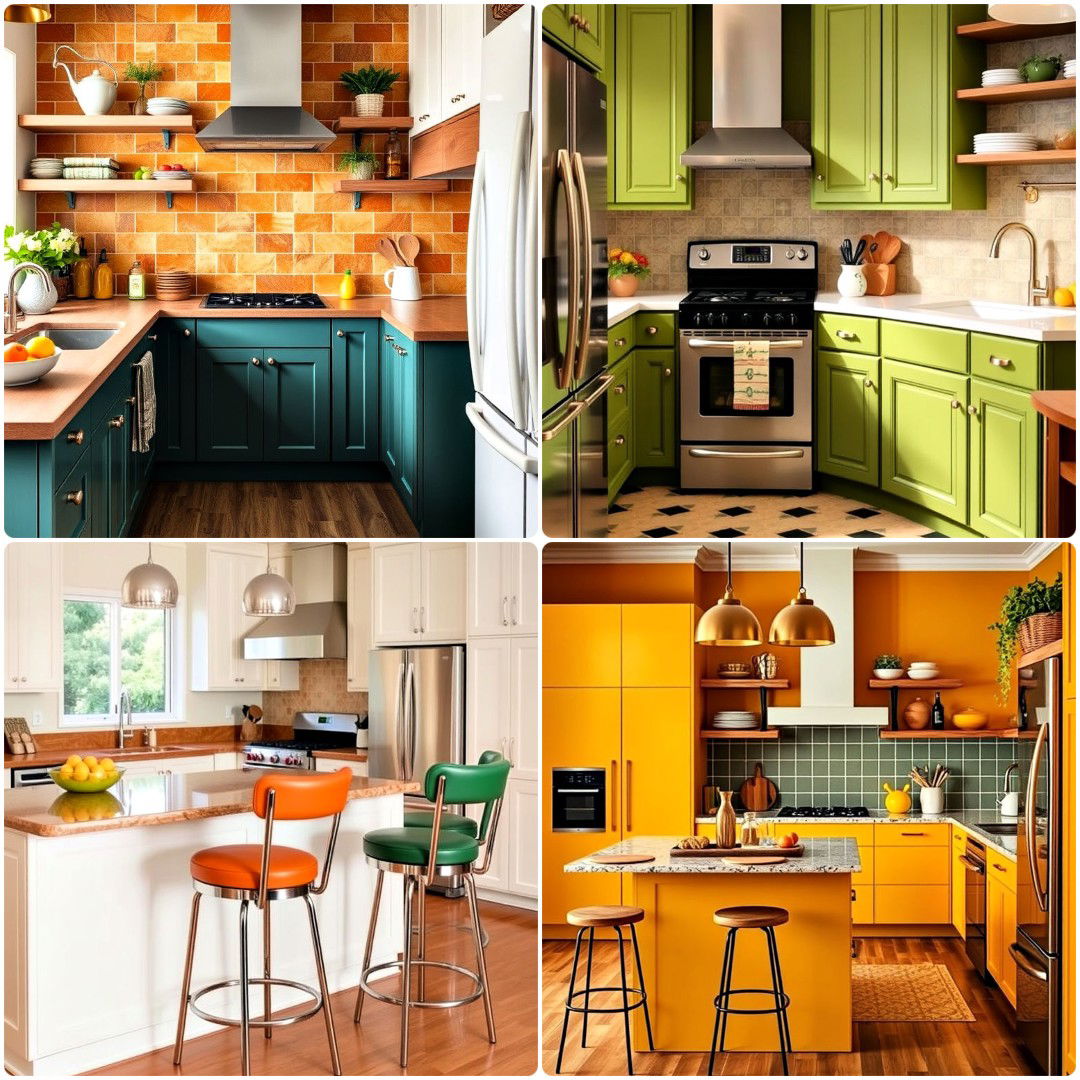

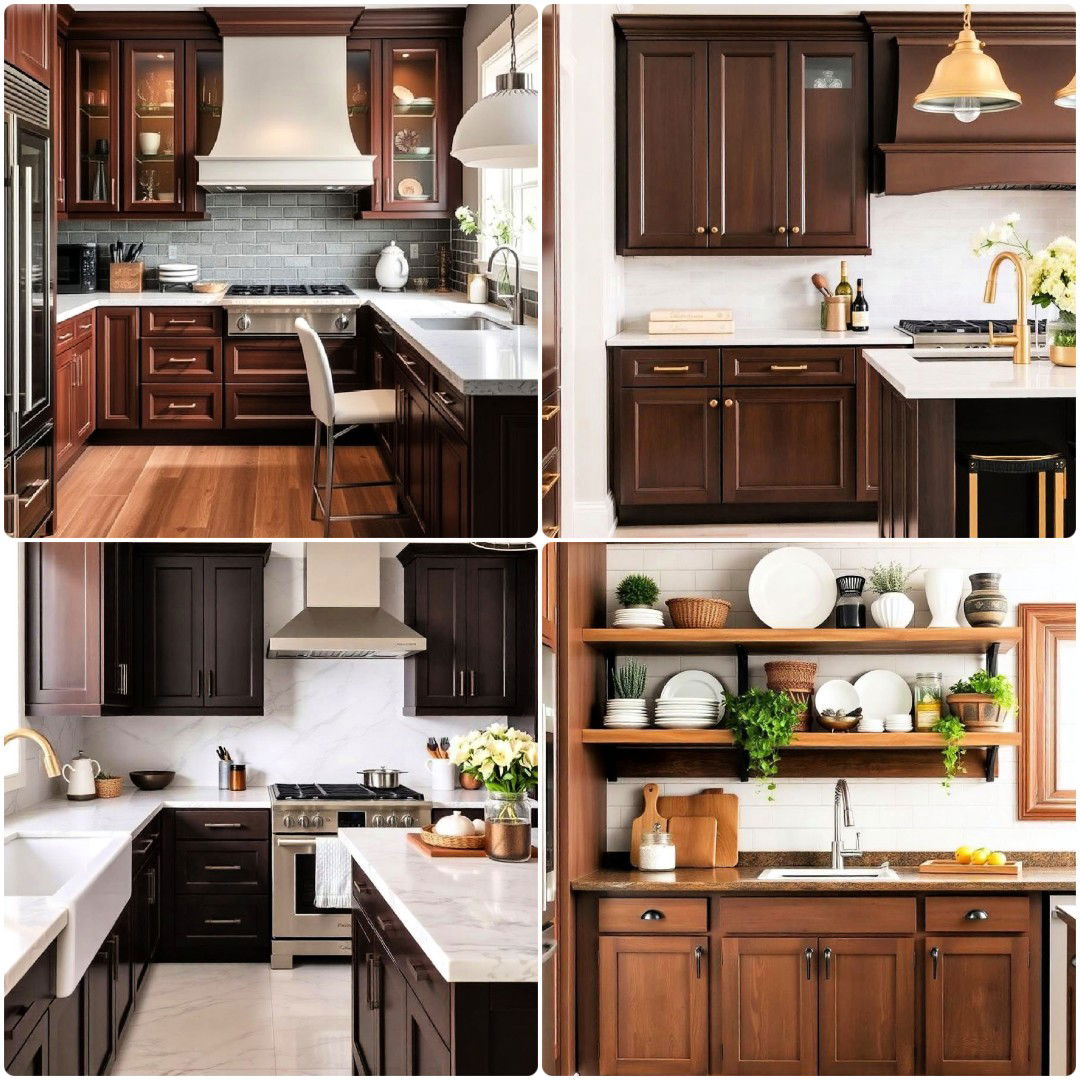
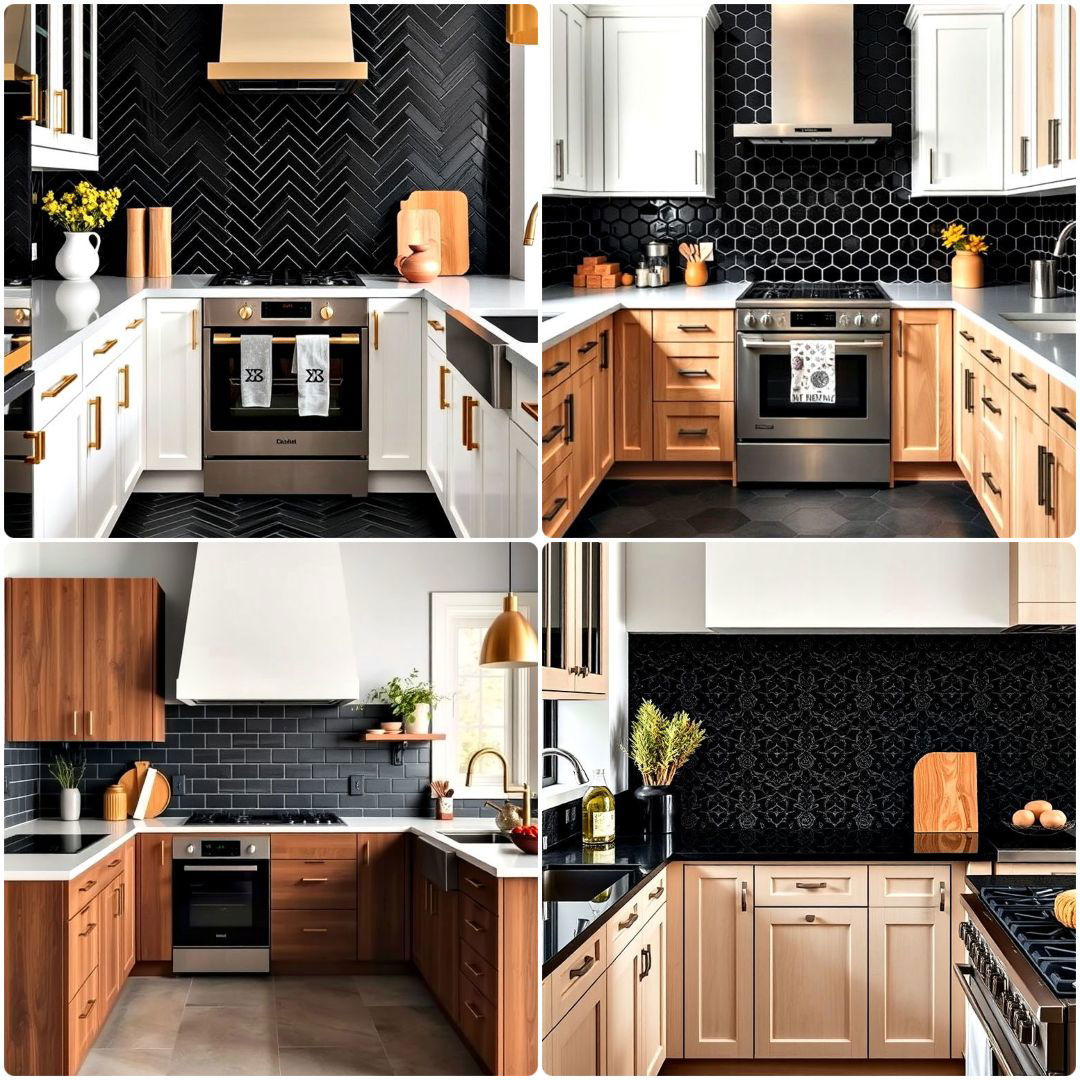

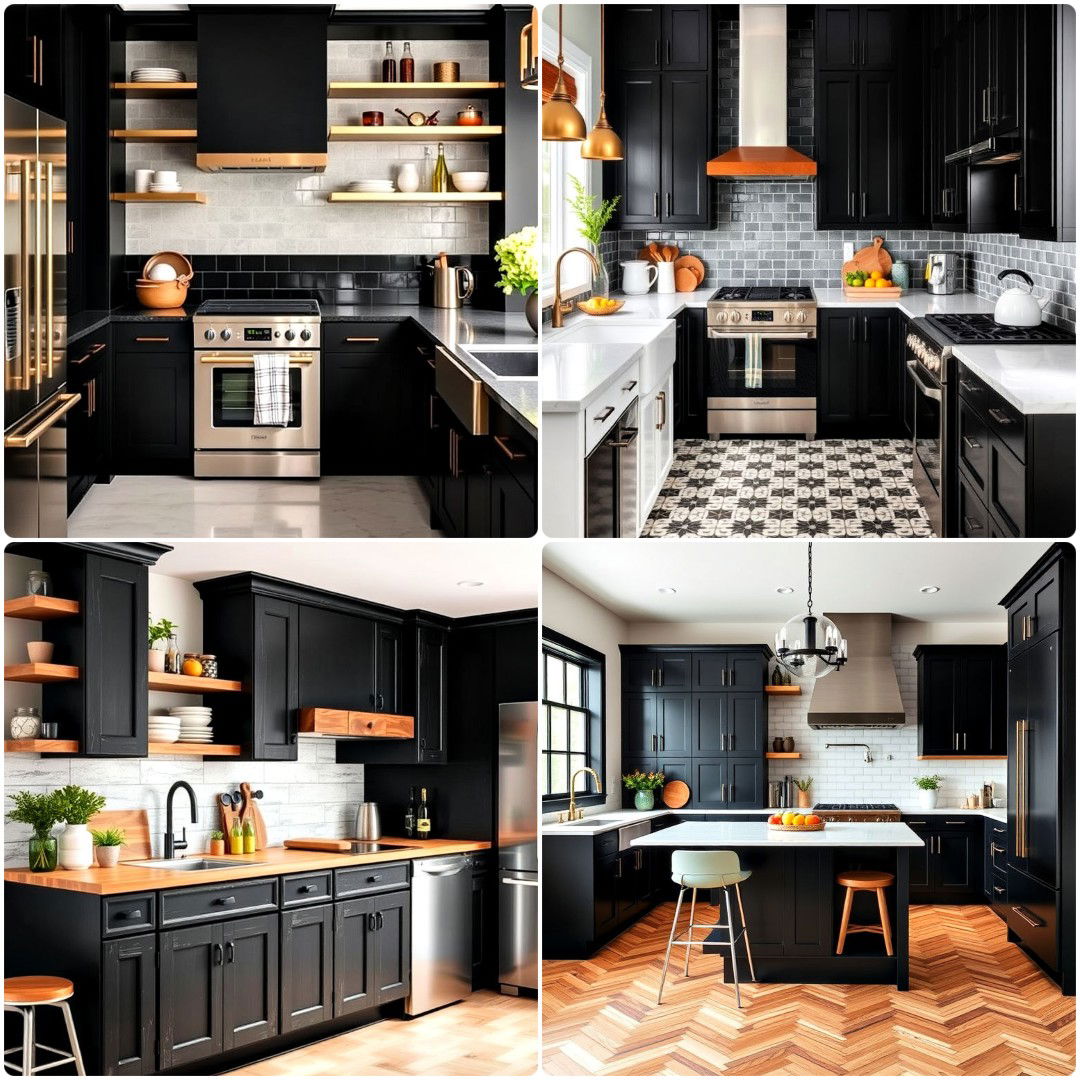
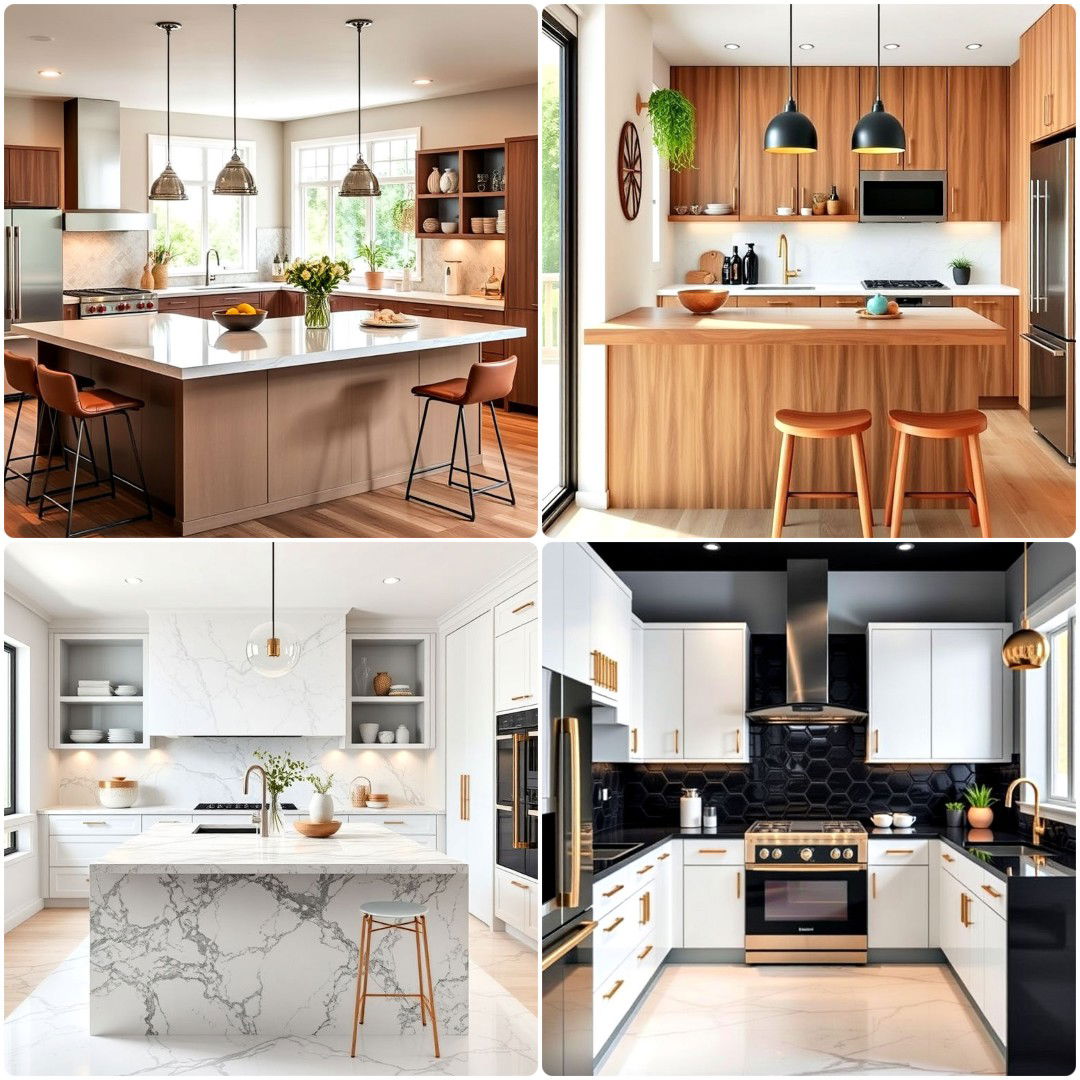
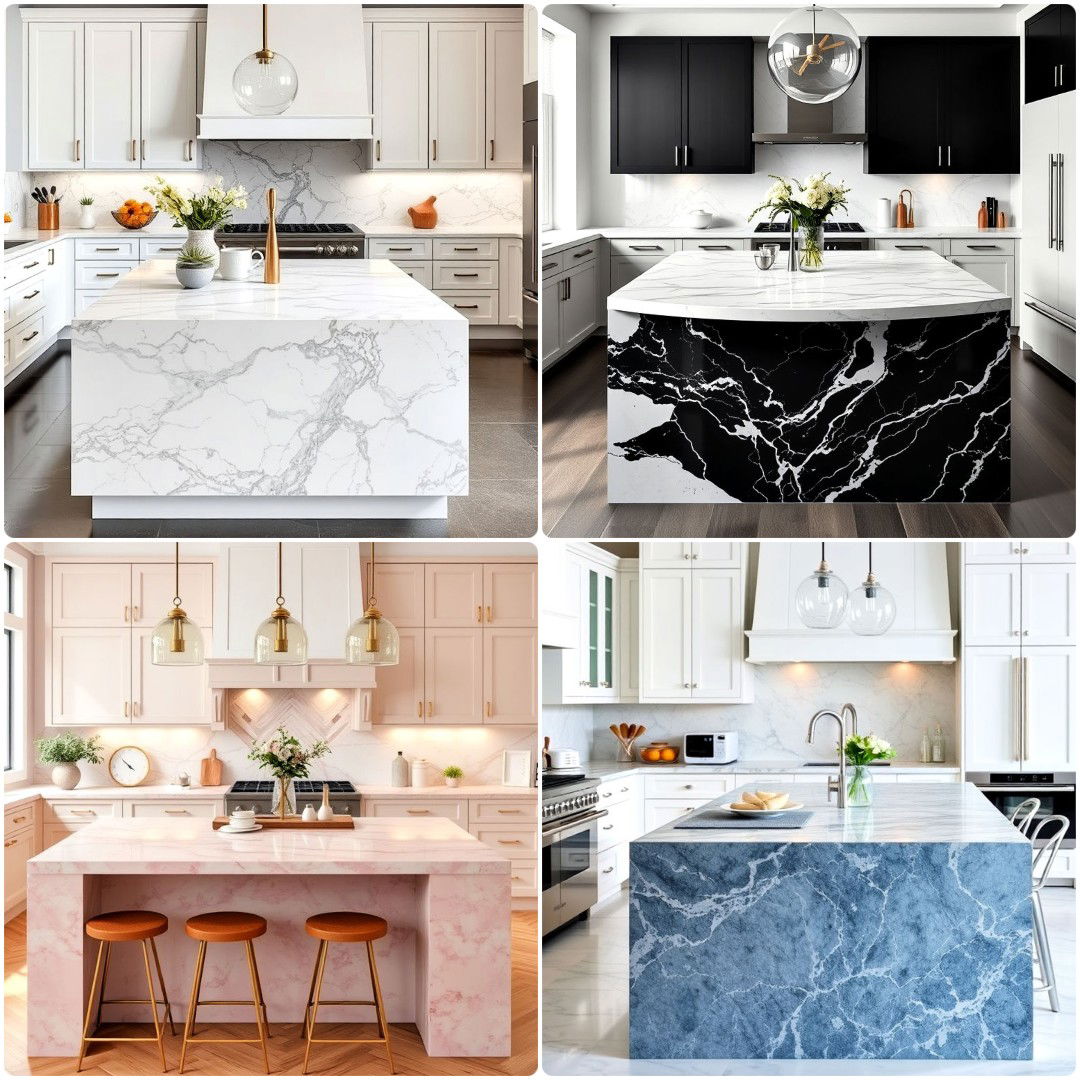
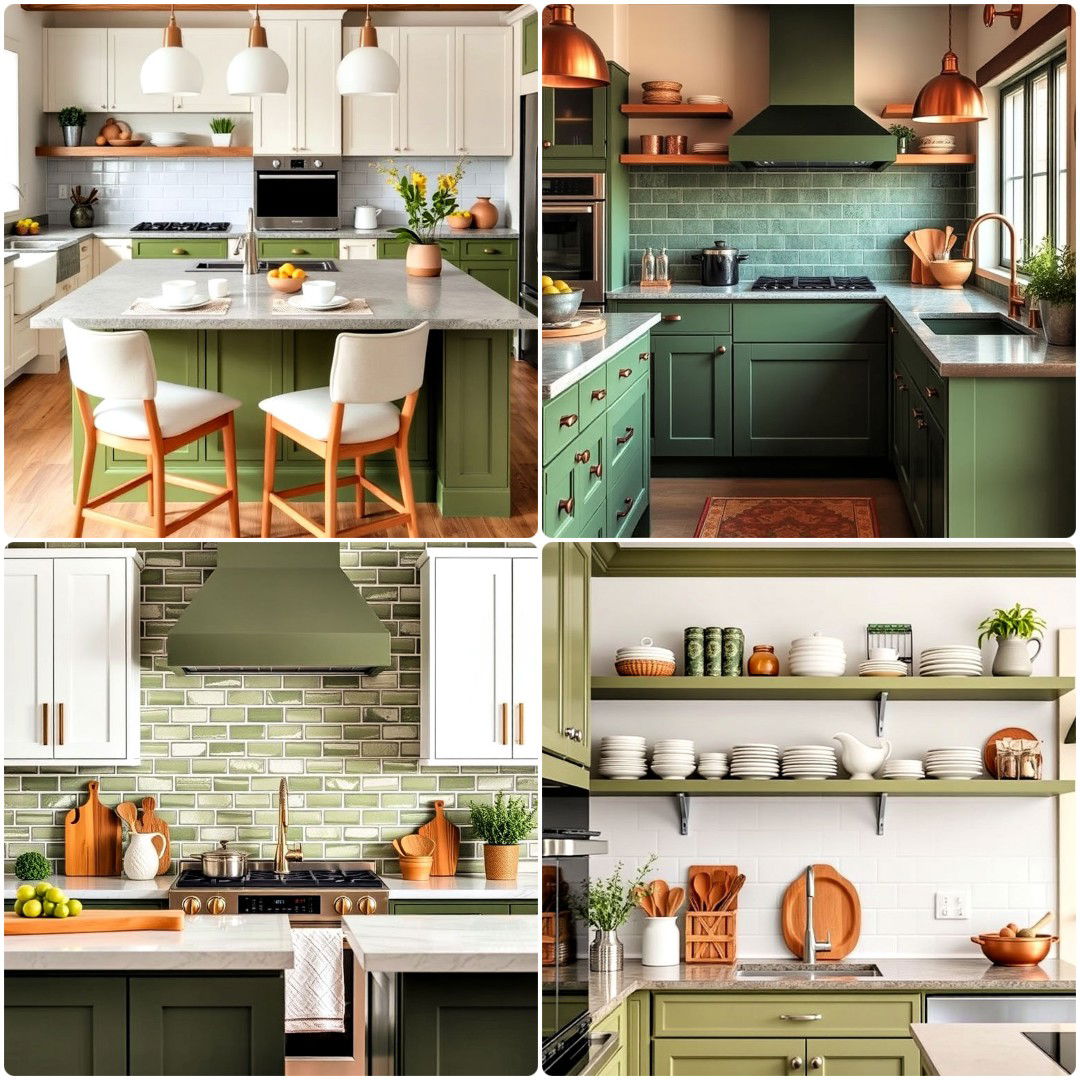


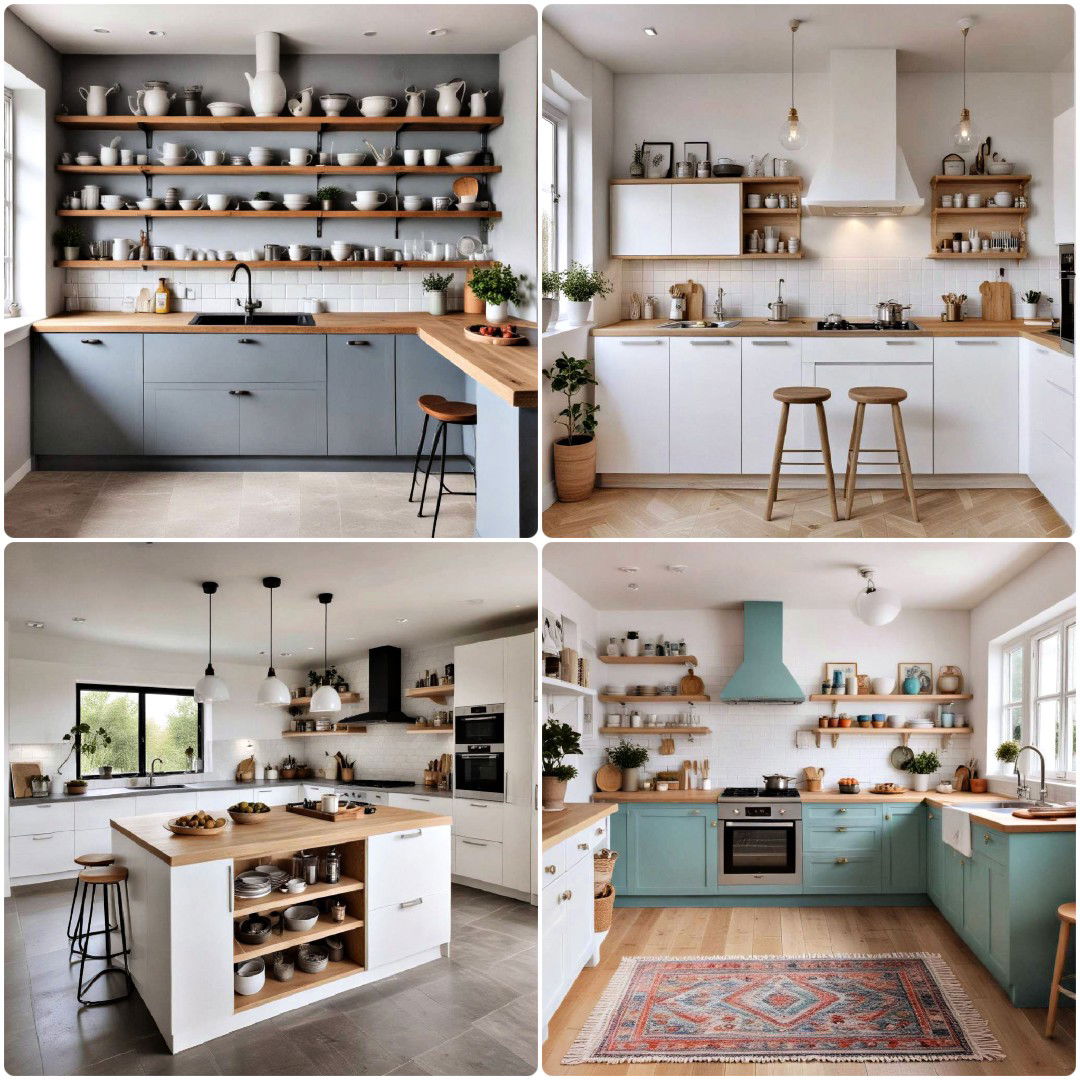
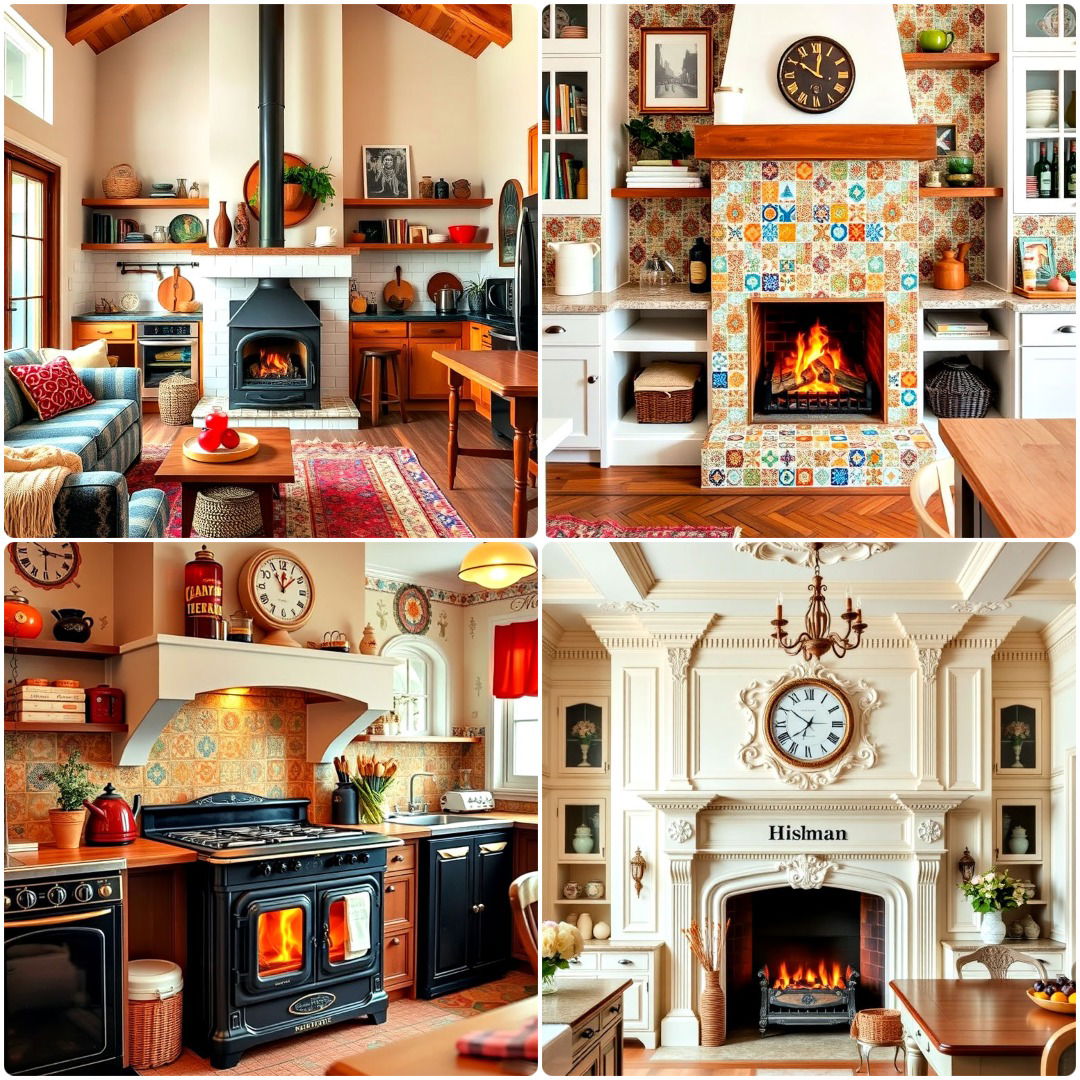
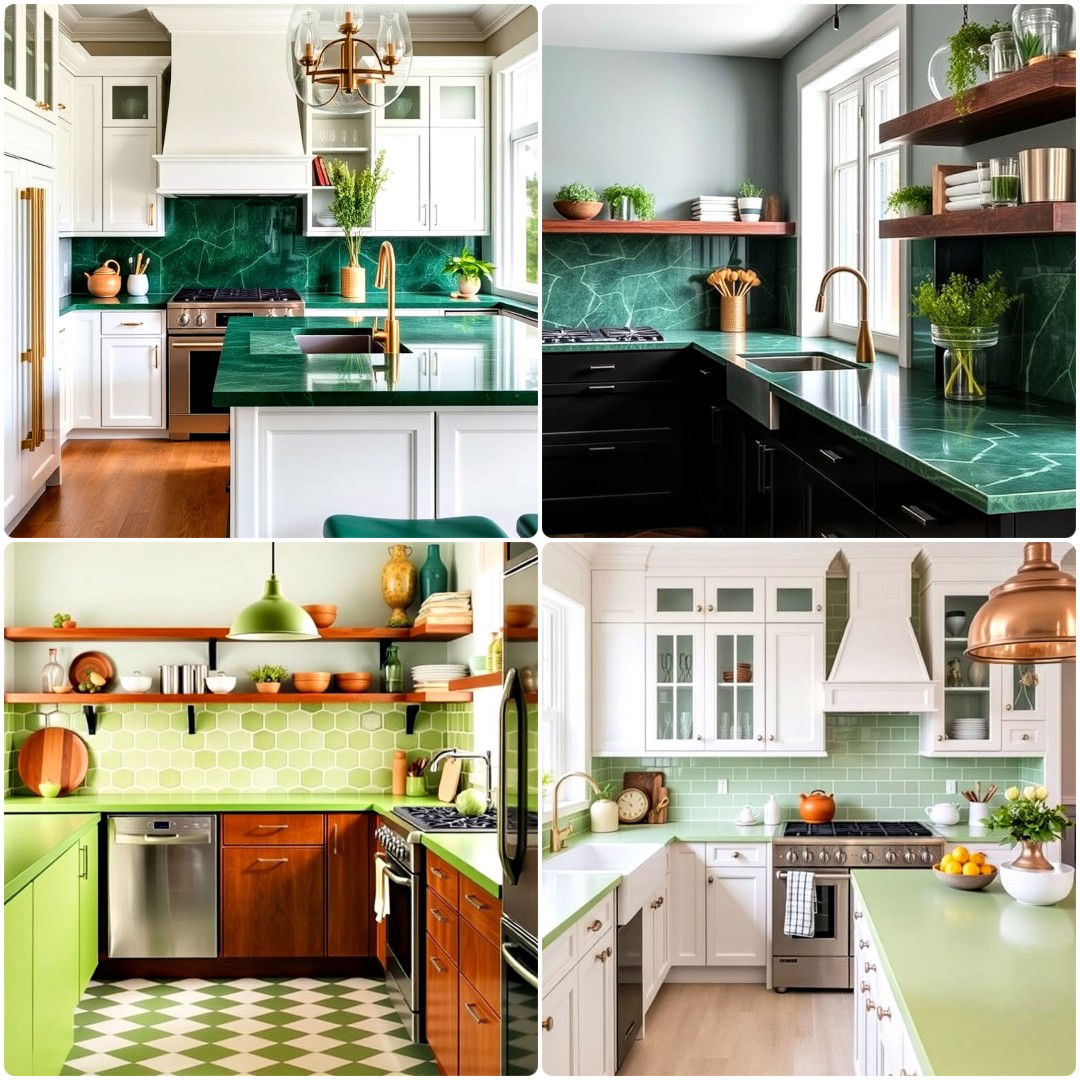
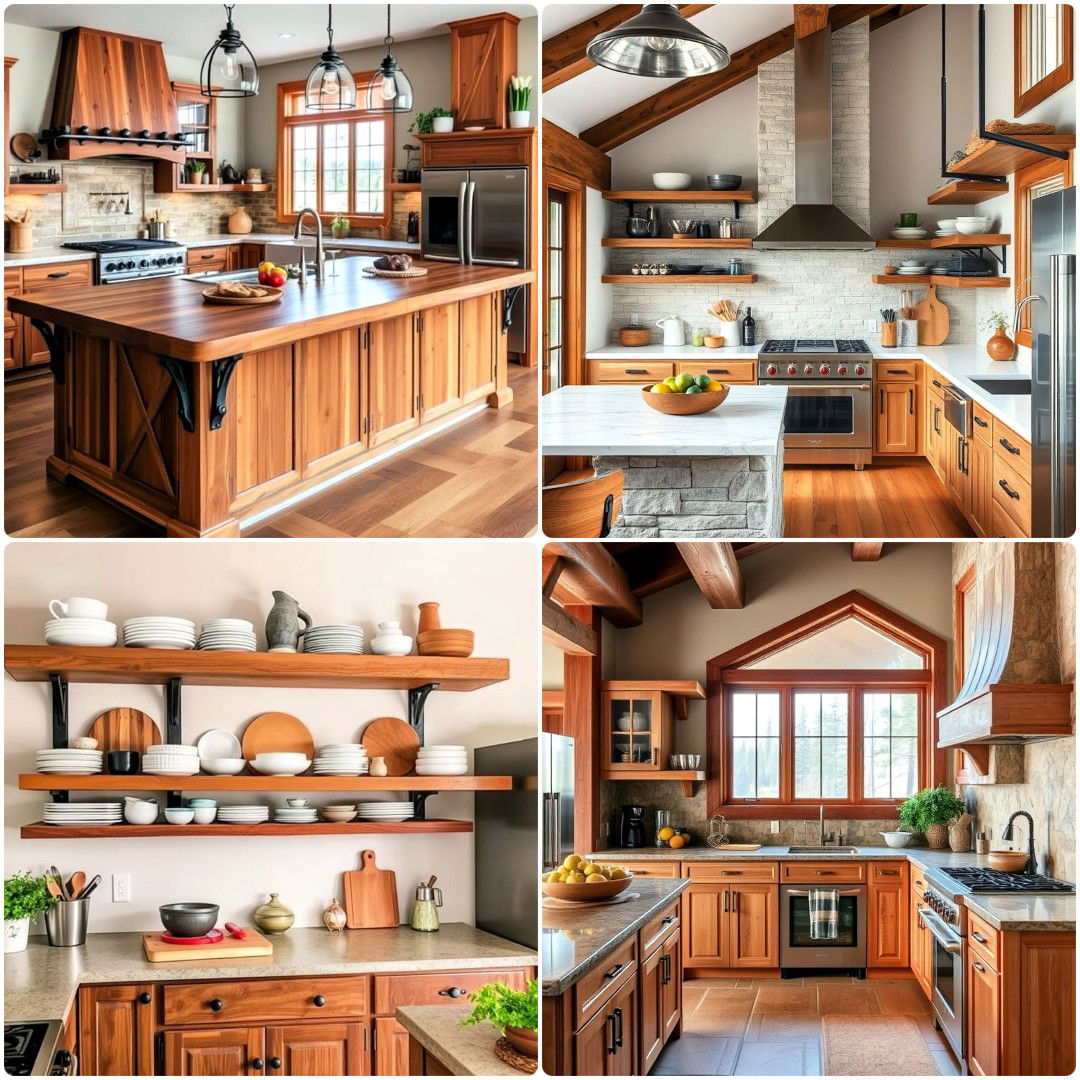
Leave a Reply